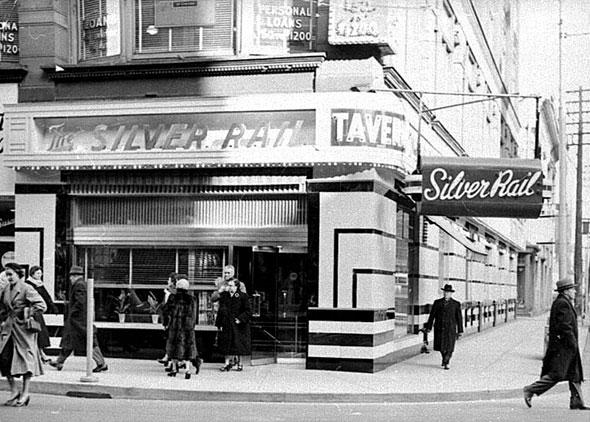
It's hard to imagine a time when it was impossible to legally order a cocktail, get a cup of Tim Hortons coffee, or go home to an apartment in Toronto but, of course, the city didn't always have those things, and there had to be a first for everything.
Broadly speaking, Toronto began to develop the things we now recognize as ubiquitous - shopping malls, apartment buildings, chain restaurants - in the 20th century, sometimes decades behind other major North American cities. Alcoholic drinks that weren't beer or wine took a particularly long time to reappear after prohibition due to tight license restrictions.
Here are the stories of 5 major Toronto firsts.
THE FIRST TIM HORTONS
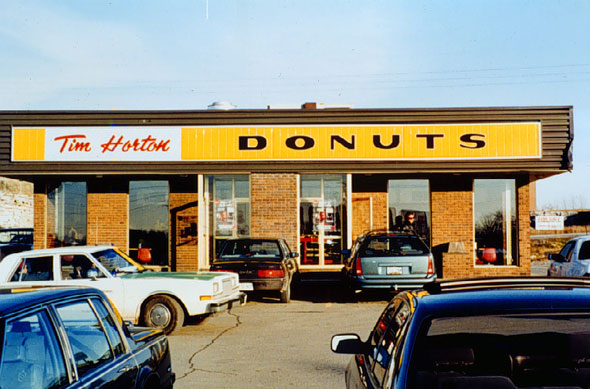
If there's one thing Toronto, or any Ontario community for that matter, has in spades, its Tim Hortons outlets. The first Toronto store of the ubiquitous chain opened at 853 The Queensway in Etobicoke (a previous incarnation of the company, a chain of drive-in steak restaurants, ran a short-lived "Tim Horton Do-Nut" in a Lawrence Ave. shopping plaza in the 1960s) and looked much like the store pictured above.
Former Toronto Maple Leaf strongman Horton founded the company we recognize today out of a former Esso station at Ottawa St. and Dunsmure Rd. in Hamilton with the help of business partner Ron Joyce in the late 60s. The Queensway store arrived on the 1st June, 1970, and it's still there - albeit substantially renovated.
THE FIRST SHOPPING MALL
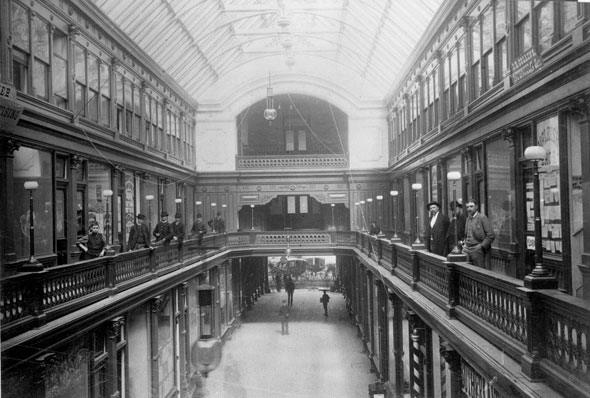
Built in 1883, Yonge Street's Toronto Arcade was by just a few years the first building in Toronto to enclose multiple stores within a single, multi-level building.
A two-storey atrium, skirted by ornate woodwork and lit by a massive 130-foot glass skylight, provided storefront space for 52 retailers, including the Arcade Saloon and Restaurant, Arcade Cigar Store, Alexander Chinn's Barber, James Pape's florist, and Miss Westmacott's School of Design and Drawing for Ladies.
The third and fourth floors were leased as apartment and office space. The British American Business College, which taught book-keeping, manufacturing, correspondence, penmanship, shorthand, mental arithmetic, and, oddly, "steamboating," occupied the first level above the shopping concourse for many years and advertised on its exterior.
The Toronto Arcade fell into dereliction in the 1950s following a series of fires and many inglorious years as a discount mall, and was knocked down. The Arcade Building with its neon rainbow exterior opposite Temperance Street was built on the site in the 1960s.
THE FIRST APARTMENTS
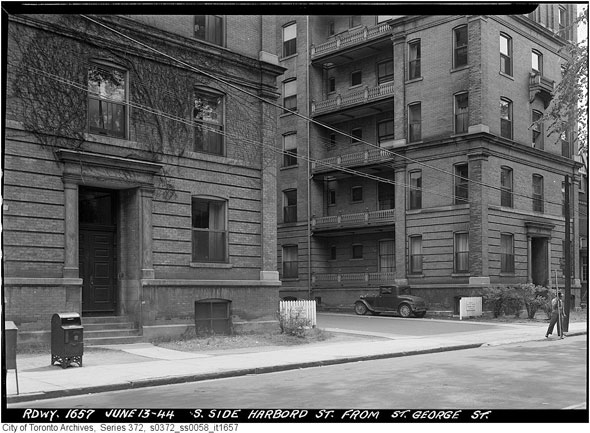
Toronto was extremely slow to issue the permit for its first purpose-built apartment complex. Cities like New York, Detroit, Cleveland, and Buffalo had already seen demand for mutiple-occupancy buildings when, in 1899, the Improved Realty Co. of Toronto Ltd. started work on the St. George Mansions at Harbord, Hoskins, and St. George streets.
The six-storey, C-shaped pressed brick and Bedford stone building contained 34 apartments and was home to 99 people in 1904, many of them wealthy middle-aged married couples. It was soon joined by similar buildings on University Avenue, Huron Street, and Spadina Road.
It was demolished in the years after the second world war, during which it was repurposed as the Toronto home of the Canadian Women's Army Corps and nicknamed "cockroach palace." It was replaced by the University of Toronto's Ramsay Wright Zoological Laboratories building in 1965.
THE FIRST COCKTAIL LOUNGE
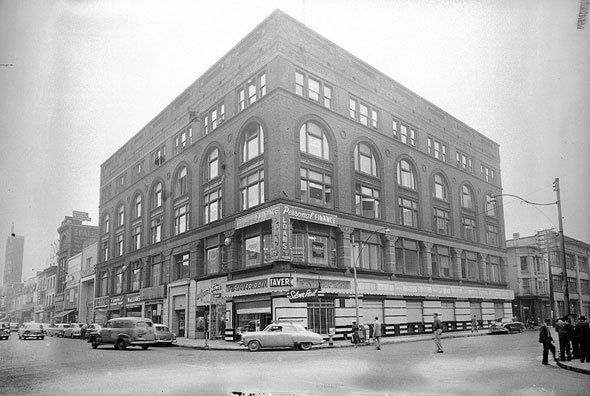
Toronto took a long time to emerge from the paranoid prohibition years between 1916 and 1927. With the formation of the Liquor Control Board of Ontario and a slight loosening of the rules, taverns were eventually allowed to serve beer and wine - no liquor, and certainly no cocktails - before 1930.
In 1947, the LCBO relaxed a little more and issued the province's first cocktail licenses and the spectacular neon and chrome Silver Rail at Yonge and Shuter streets was first (by a hair) to obtain one of the coveted permits. Its liquor menu featured a dazzling range of whiskies, brandies, champagnes, rums, liqueurs, egg nogs, gins, sours, "long tails, and flips."
Jazz legend Charlie Parker drank at the Silver Rail before a now legendary performance with Bud Powell, Charles Mingus, Max Roach, and Dizzy Gillespie across the street at Massey Hall. Pianist Oscar Peterson was played an impromptu concert on the bar's baby grand one night. Metro Toronto chairman Fred Gardiner (he of the expressway) also liked to visit after work.
The Silver Rail met its demise in 1998 when the landlords decided to replace it with a Bay outlet.
THE FIRST COFFEE SHOP
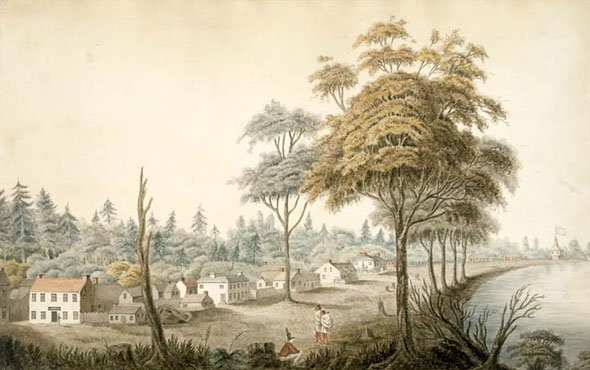
The Toronto Coffee House could rightfully lay claim to two firsts: it was the earliest business to use the word "Toronto" in its name and it was the first public meeting place to style itself after European coffee houses. Opened in 1801 on the east side of Jarvis Street, just north of Front Street, the two-storey building really didn't operate much like a modern coffee shop.
Owner-operator William Cooper, who was at times a teacher, wharf operator, and the town's coroner despite having no formal training in the field, described his business "as nearly on the footing of an English inn as local circumstances" allowed. It served wine, brandy, gin, lime juice, and London porter beer as well as food: "oysters, red herring, and anchovies." There was also a dry goods business and inn under the same roof.
Cooper chose the name in an attempt to position the business as a European-style meeting place, a shrine to conversation and a hub for the local community. He sold the business in 1806 to focus on his Humber River mill.
Please share this
No comments:
Post a Comment